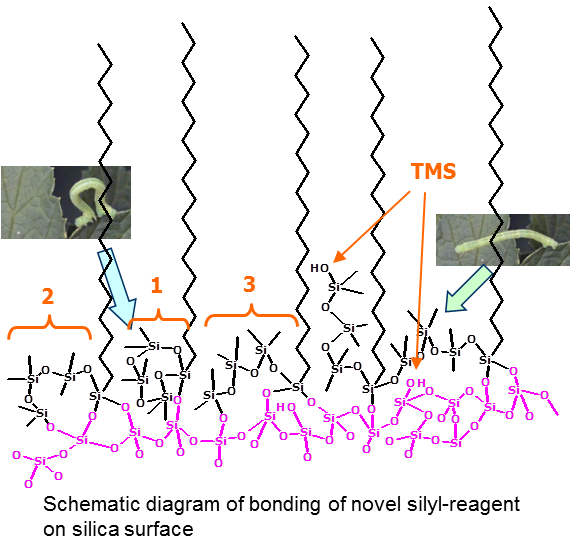About SunShell (Core-shell particle)
SunShell column has not only an inert surface but also high stability due to deactivated silanol groups. SunShell 2.6 μm column can be used on both HPLC and UHPLC because it shows 2 times lower back presure than sub 2 μm column.
SunShell C18 2.6 μm sized 100x4.6mm has the same performance as a totally porous C18 5 μm sized 250x4.6mm, so that the same separation can be achieved by both columns without changing the separation condition consequently analysis time reduces one third.
Features of SunShell with 2 μm, 2.6 μm, 3.4 μm and 5 μm
- 1.2 μm, 1.6 μm, 3.0 μm and 3.4 μm pf core diameter and 0.4 μm, 0.5 μm, 0.2 μm and 0.6 μm of superficially porous silica layer thickness.
- Higher Efficency and higher throughpit to compare with totally porous silica with same size.
- Good peak shape for all compounds such as basic, acidic and chelating compounds.
- High stability (pH range for SunShell C18: 1.5 to 10)
- Low breeding
The Basic Characteristics of SunShell
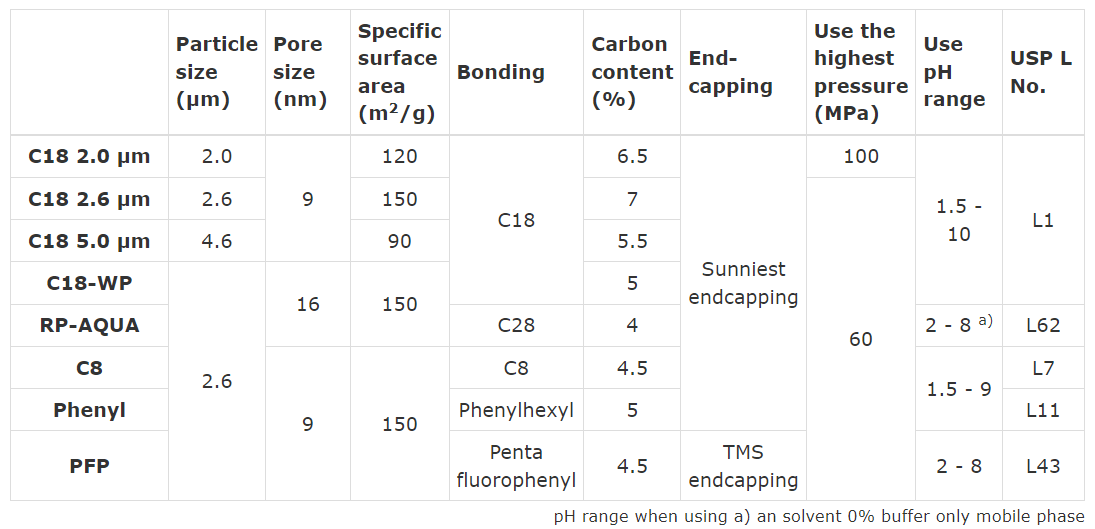
Comparison of theoretical plate and back pressure
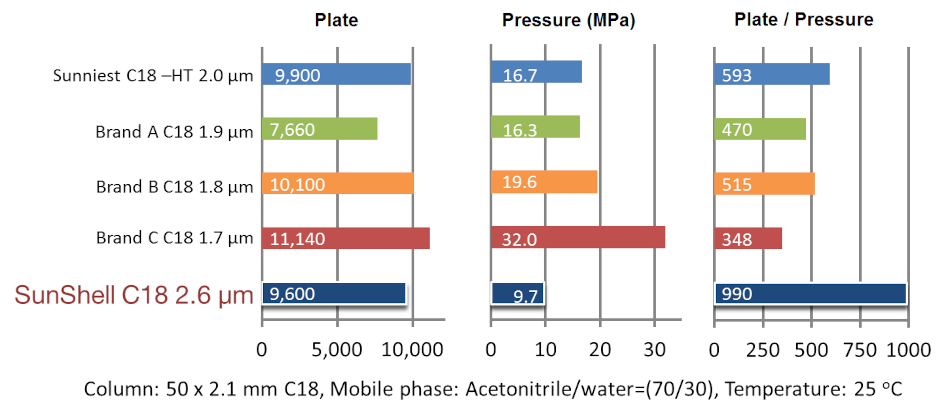
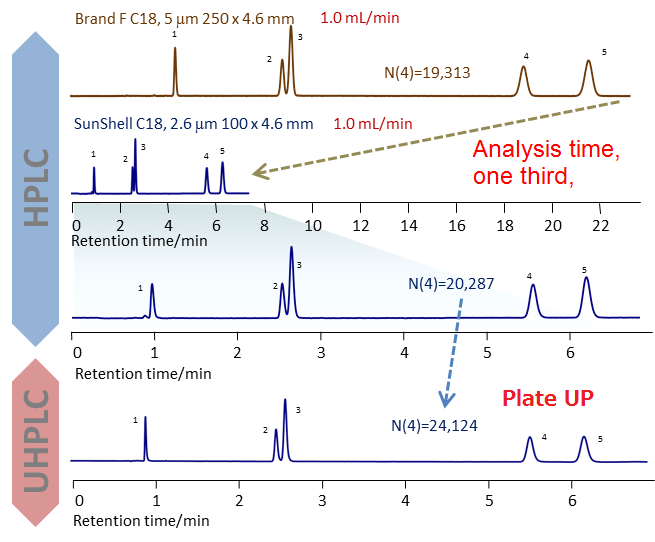
| Column | Brand F C18, 5 µm, 250 x 4.6 mmSunShell C18, 2.6 µm, 100 x 4.6 mm |
| Mobile Phase | CH3CN/20mM Phosphoric acid = 45/55 |
| Flow Rate | 1.0 ml/min1.8 ml/min at the lowest chromatogram |
| Temperature | 25 oC |
| Detection | UV 230 nm |
| Sample | 1. Benzydamine2. Ketoprofen3. Naproxen4. Indomethacin5. Ibuprofen |
|
HPLC
UHPLC
|
Hitachi LaChrom ELITE (tube 0.25mmI.D.)
Jasco X-LC
|
Influence of cell capacity
To reduce total system volume of the HPLC using a semi-micro flow cell and 0.1 mm i.d. tubing, efficiency of SunShell C18 5 μm column improved to close true performance. Furthermore, decreasing the response speed and the short sampling time contribute high efficiency.

| Column | SunShell C18, 5 µm, 250 x 4.6 mm |
| Mobile Phase | CH3CN/H2O=70/30 |
| Flow Rate | 1.0 ml/min |
| Temperature | 40 oC |
| Detection | UV 250 nm |
|
Sample
|
1. UBenzy
2. Toluene
3. Acenaphthene
4. Butylbenzene
|
|
HPLC
|
Hitachi LaChrom ELITE
|
Influence of the pipe inner diameter
The relationship between the inner diameter of a tubing and theoretical plate was evaluated.
When the tubing with a large inner diameter was used, the dead volume in the tubing was large.
The larger the dead volume, the broader the peak. The tubing with 0.1 mm or less than 0.1 mm of inner diameter is recommended especially when 2.1 mm i.d. column is used.
5 μm core shell column sized 4.6 mm i.d. is acceptable for HPLC or semi-micro HPLC. However, UH`LC is recommended for a 2.1 mm i.d. column because of a low column volume.
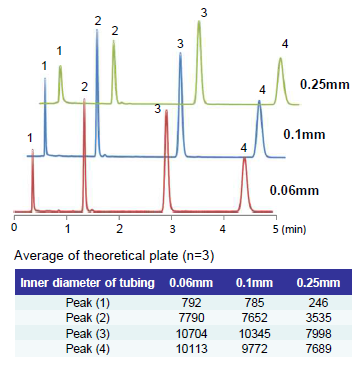 |
|
Influence of response time
Response time of the detector is also important, when the peak width (4δ) is equal to or less than 1 second (above uracil) will need the following response time 0.03 seconds. Be about the peak width is 6 seconds, response time is desirable less than 0.3 seconds.
The same applies to further integrators of sampling rate, it is desirable to set the following 0.1 seconds.
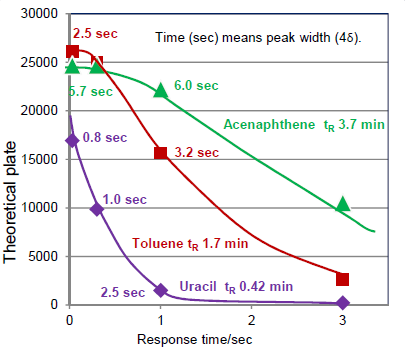 |
|
Excellent End-Capping
Hexamethyltri siloxane is used as an end-capping reagent. This reagent can stretch and be bent like a Geometrid caterpillar as shown in the figure, so that a functional group on the tip of the reagent can bond with a silanol group which is located anywhere.
This end-capping made influence of residual silanol groups the lowest. Then not only good peak shape of a basic compound but also excellent stability was achieved by this unique end-capping.
